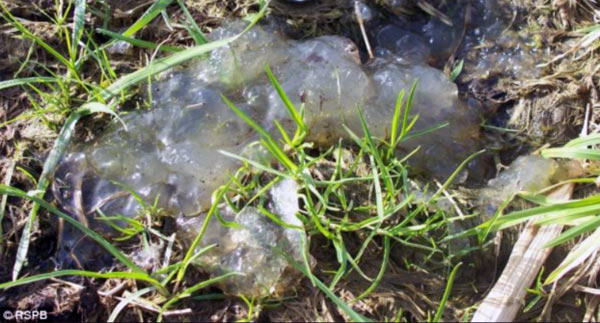Natural History Museum sets up unit to investigate unexplained phenomena
It is reassuring to see that there are still some brave scientists around willing to investigate the less conventional findings rather than simply placing them in the ‘too hard to solve’ basket – the Natural History Museum in London has made an announcement about a specialised department which has been likened to the well-known X-Files programme.
The unit’s Identification and Advisory Service will be responsible for investigating a wide-range of unexplained phenomena, and so far they have been contending with so-called ‘space slime’, and a host of bizarre items discovered by the British public including bones resembling a dragon skull, round objects believed to be meteorite fragments, and a skull with long tusks believed to have belonged to the ice-age sabre tooth tiger.
The research team takes a scientific approach to all the submissions and so-far they have been able to solve many of the mysteries – the ‘dragon skull’ is the pelvis of a sea bird, the ‘sabre-tooth tiger’ is the skull of a Chinese Water Deer, and the meteorite fragment was in fact a solidified ball of aluminium foil.
However, one of the unexplained phenomena still has the team baffled – the mysterious slime discovered in a nature reserve in Somerset. The slime appeared at the same time as a meteor crashed to earth in Chelyabinsk, Russia, which has led many to believe that the strange substance has come from space.
An amateur photographer claimed he had captured a mysterious object whizzing through the sky above the park on camera. The object appeared to be a meteor, although this was not confirmed by astronomers.
The London museum's Angela Marmont Centre (AMC) for UK Biodiversity, which houses the Identification and Advisory Service, was tasked with investigating the mysterious slime, with the aim of establishing whether it had fallen from space, or if its origins were rather more terrestrial. Laboratory tests have so far failed to find just what it could be - and where it had come from.
Scientists from the unit extracted DNA from the jelly and tried to match it against that of birds and frogs, without success. This rules out the theory that the slime is unfertilized frog spawn.
“The slime is still a genuine mystery,” said Chesca Rogers from the AMC. “There are stories in folklore that link it with meteor sightings. Some people think it might be unfertilised frog spawn, others think it is a fungus, or a slime mould or that it is plant related. None of the tests we have done so far have told us anything conclusive.”
Every year the museum receives around 10,000 inquiries from the public, who are encouraged to bring their finds to the Museum for examination.


















Comments
i'd love to help solve an x-file. the slime is interesting!!!
love, light and blessings
AB
All I can say is good and about time. There needs to be more research done on natural phenomenon and unexplained events, but it needs done by knowledgeable and open minded people and often through out academia we see tunel vision runnin rampant.
There are microbial communities that grow on the ceilings of natural and manmade caves called "snotties". It's also known that microbes are present in the atmosphere that are associated with rain clouds. Perhaps an electron microscope could be used, along with DNA studies, that could associate these three phenomenon?
Peace, love, time and space, abundant,
Tim Wilkerson
alchemyastrology.com